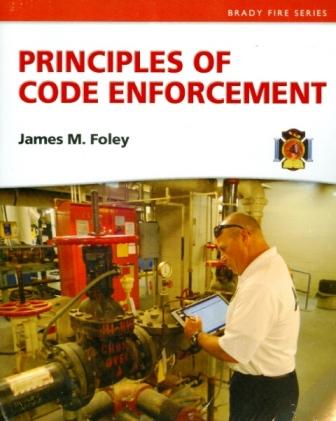Principles of Code Enforcement
$93.32
in stock
James M. Foley
Provides a comprehensive overview of the everyday work practices of fire inspectors and the important role they play in fire risk reduction in their communities.
The text’s easy-to-follow format covers basic and advanced concepts for fire science students, fire inspectors, and fire officers seeking advancement in their fire service careers. Case studies and illustrations help readers understand and implement complex fire code and fire protection requirements and provide insight into practical approaches to improving response and recovery efforts in the community.
This text addresses the FESHE requirements for fire code enforcement as well as NFPA 1031 and 1037 knowledge requirements.
Features:
- Conveys both basic and advanced fire prevention concepts and the information necessary to be successful in the fire prevention field.
- Describes the different types of municipal budgets and how they are prepared and justified to support fire code inspections.
- Provides information on how to organize data into easy-to-understand graphics and discusses the core metrics for evaluating fire prevention success.
- Show how to use a systematic approach to making observations during the fire inspection tour and translating that information into a clear and concise fire inspection report.
- Shows how to identify the proper procedures for presenting fire code cases in court as well as other public forums.
- Readers learn that fire inspectors must pay attention not only to occupied buildings but also community hazards that can spread fire, such as accumulations of trash and vacant structures.
- Helps readers define hazardous materials control areas and the appropriate quantities of storage permitted as well as the fire safety parameters for safe handling.
- Reviews the calculation of building occupant loads, egress travel distance, and the protection of exits by fire resistant construction.
- Teaches students how to recognize and evaluate passive fire protection building features to ensure compliance with fire prevention codes.
- Provides inspection and maintenance elements that the inspector must examine during the course of conducting a fire inspection.
- Conveys methods of calculating fire flows and determining the carrying capacity of fire department tanker operations.
- Provides an easy-to-understand plan examination process for both new and seasoned fire inspectors as well as key inspection criteria that should be reviewed on the building documents.
- Offers an easy-to-follow format that helps instructors to teach the course and students to visualize and apply the concepts of fire code enforcement.
For courses in basic and advanced fire inspection, community risk reduction, advanced fire prevention administration, and promotional examinations. The text is also a useful reference for fire code administrators and fire inspectors already working in fire prevention bureaus.
- Illustrations and photographs throughout every chapter assist instructors in explaining the different concepts presented in the text.
- Case studies demonstrate real-world applications of fire code enforcement techniques.
- The text is written in 14 chapters allowing the instructor to move through each element of fire code enforcement in a class week.
- Suggested readings and review questions are included for each chapter.
SpecificationsBrady / Prentice-Hall, 2014
8" x 10 1/2" softcover
416 pages, color photos and illustrations
ISBN: 978-0-13-262591-3


